ASKI, Archive of Fofi Lazarou
Bibliography
Axioti Melpo, Oi Ellinides frouroi tis Elladas [The Greek women guards of Greece], ed. O Rigas, Athens 1945
Axioti Melpo, “I Ellinida” [“The Greek woman”], journal Elliniki Aristera, vol. 25-26 (1965), p. 119-122.
Birkas Kostas, Elektra Apostolou. I athanati iroida tou ethnous [Elektra Apostolou. The immortal heroine of the nation], Athens 1978
Karagiorgi Maria, Apo mia spitha ksekinise [From a spark it started], ed. Proskinio, Athens 2001
Partsalidou Avra, “Elektra”, journal Dimokratikos Stratos, vol. 8 (8/1949), p. 550-554
Partsalidou Avra, Anamniseis apo tin zoi tis OKNE [Memories of the life in OKNE], ed. Sygchroni Epohi, Athens 1978
Sideridi Elektra, “Sto dromo gia to Parisi. To taxidi tis antiprosopeias ton Ellinidon gynaikon sto pagkosmio antipolemiko Sinedrio” [“On the way to Paris. The journey of the Greek women delegation to the World Anti-War Congress”], newspaper Pizospastis, 8/1934.
Sideridi Elektra, “O Pagkosmios sinagermos ton gynaikon. Ap’ oles tis fyles kai apo oles tis chores oi gynaikes steilane tis antiprosopous tous. I proti mera tou synedriou” [“The Women’s Global Alert. From all races and from all countries’ women sent their representatives. The first day of the congress”], newspaper Rizospastis, 8/1934.
I ergazomeni gynaika tis Elladas ston Agona. Olokliros o logos tis Elektras Sideridi sto Pagkosmio Antipolemiko kai Antifasistiko Synedrio ton gynaikon” [“The working woman of Greece in the Struggle. The whole speech of Elektra Sideridi at the World Anti-War and Anti-Fascist Women’s Congress”], newspaper Rizospastis, 8/1934.
Sotiriou Dido, Elektra, ed. Kedros, Athens 2014
Zevgou Kaiti, Me ton Gianni Zevgo sto epanastatiko kinima [With Giannis Zevgos in the revolutionary movement], ed. Okeanida, Athens 1980


![Neolaia [Youth], a newspaper of the Federation of Communist Youths of Greece (OKNE) that circulated in the interwar period. In 1933, the newspaper was published by the resistance fighter Elektra Apostolou (1912-1944), who was tortured to death by the Occupation authorities and was a symbol of the Greek national resistance. (ASKI Library) - ASKI](https://aski.gr/wire/wp-content/uploads/2024/03/ASKI_Apostolou_02.jpg)

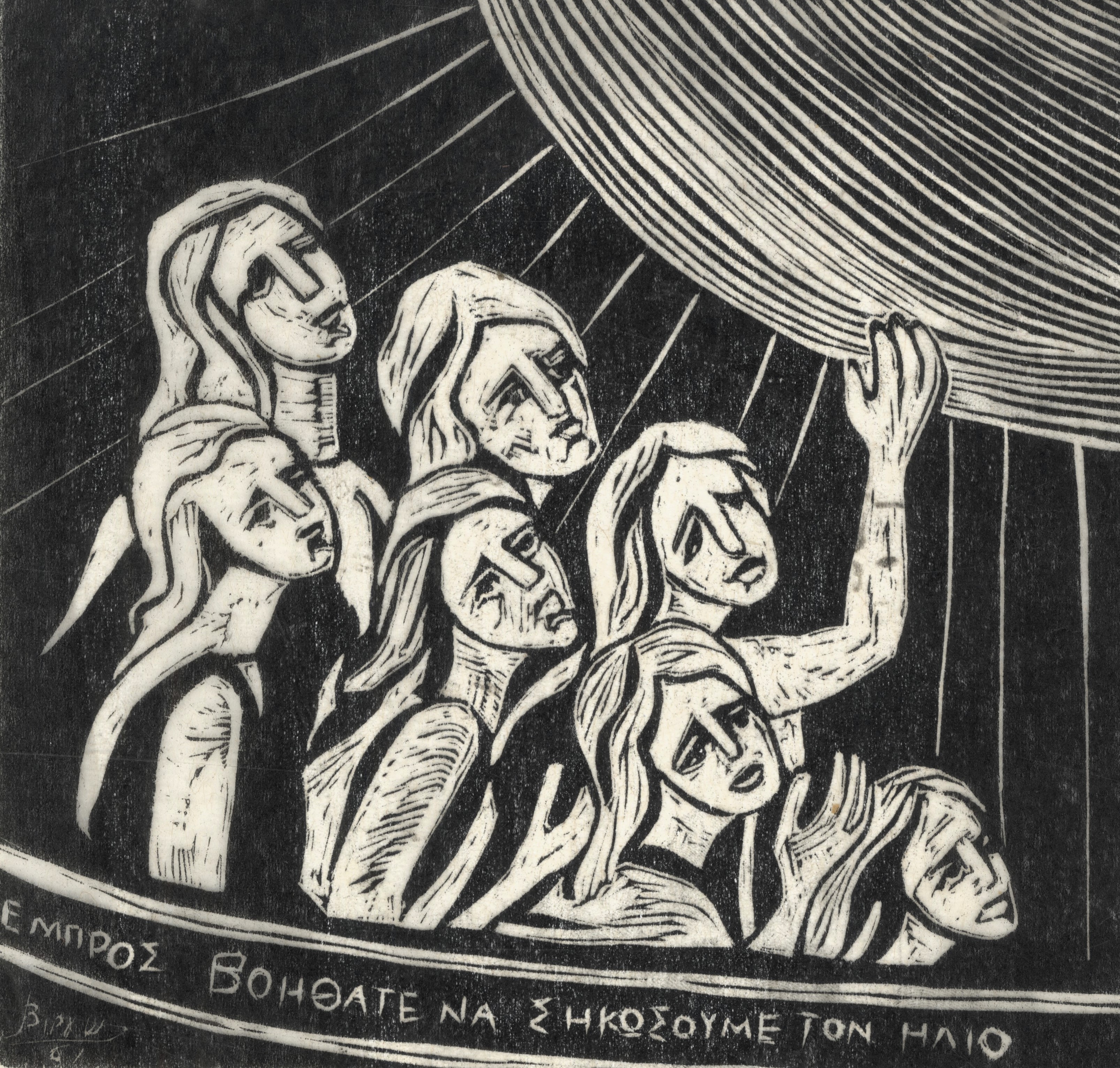

![Handwritten wall newspaper entitled Antifasistas [Antifascist] published by the Greek political exiles on the island of Anafi, 1940. The resistance fighter Elektra Apostolou (1912-1944), a political exile in Anafi during the Metaxas dictatorship, participated in the publication of the newspaper. (ASKI Library)](https://aski.gr/wire/wp-content/uploads/2024/03/ASKI_Apostolou_05.jpg)
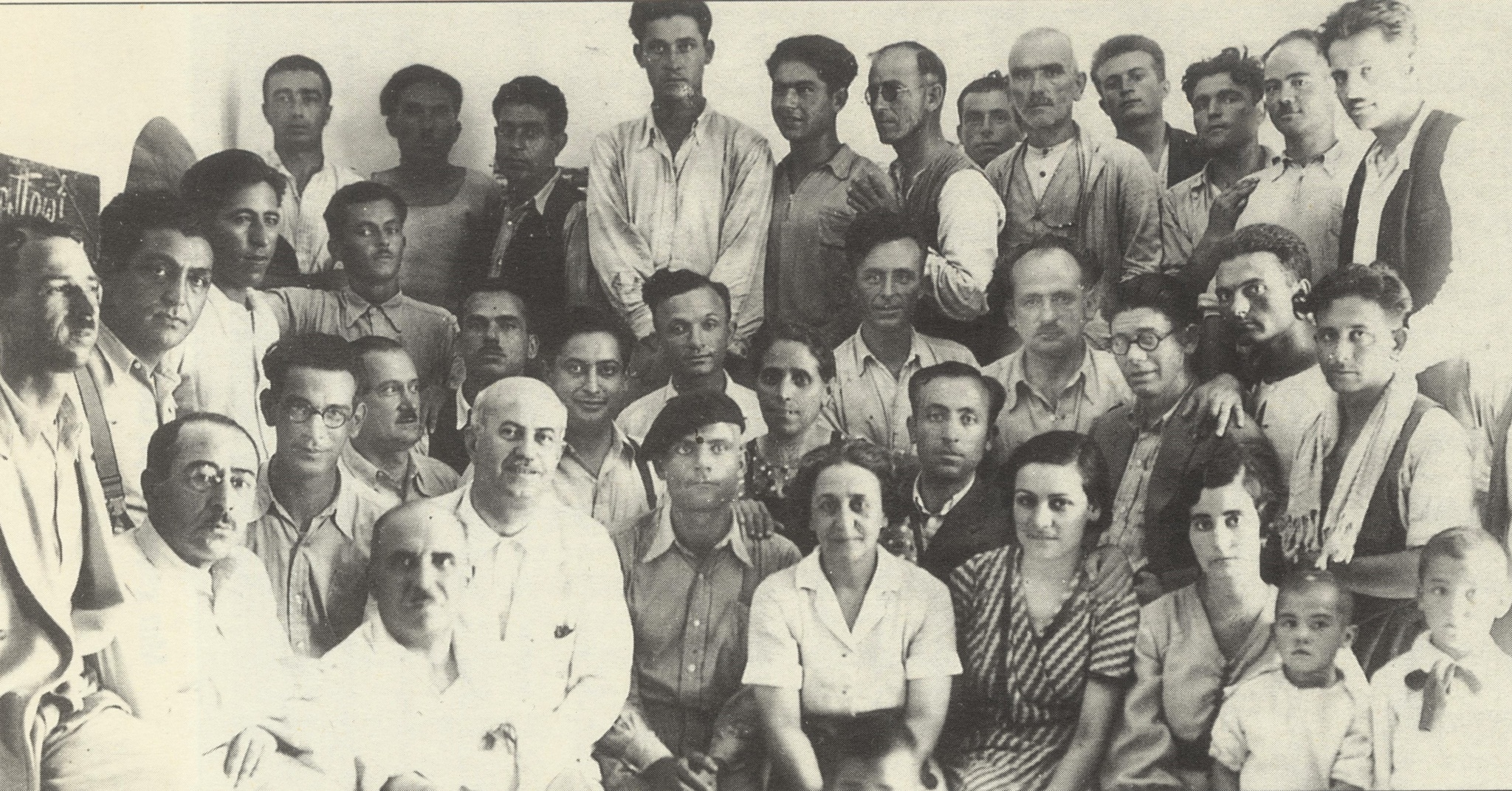
![In Greece, during the German Occupation, a very large resistance movement developed, with the participation of women. The most massive resistance organisation was the National Liberation Front (EAM). The newspaper Gynaikeia Drasi [Women's Action] was an organ of the women of the (EAM). Elektra Apostolou (1912-1944), an emblematic figure of the Greek National Resistance, participated, among other things, in the publication of illegal publications. (ASKI Library)](https://aski.gr/wire/wp-content/uploads/2024/03/ASKI_Apostolou_07.jpg)


![Publication of the newspaper Gynaikeia Drasi [Women's Action] of EAM on the death of the resistance fighter, Elektra Apostolou, 9/1944. Elektra Apostolou, a symbol of the National Resistance in Greece, was tortured to death by the Special Security in July 1944. (ASKI Library) - ASKI](https://aski.gr/wire/wp-content/uploads/2024/03/ASKI_Apostolou_010.jpg)
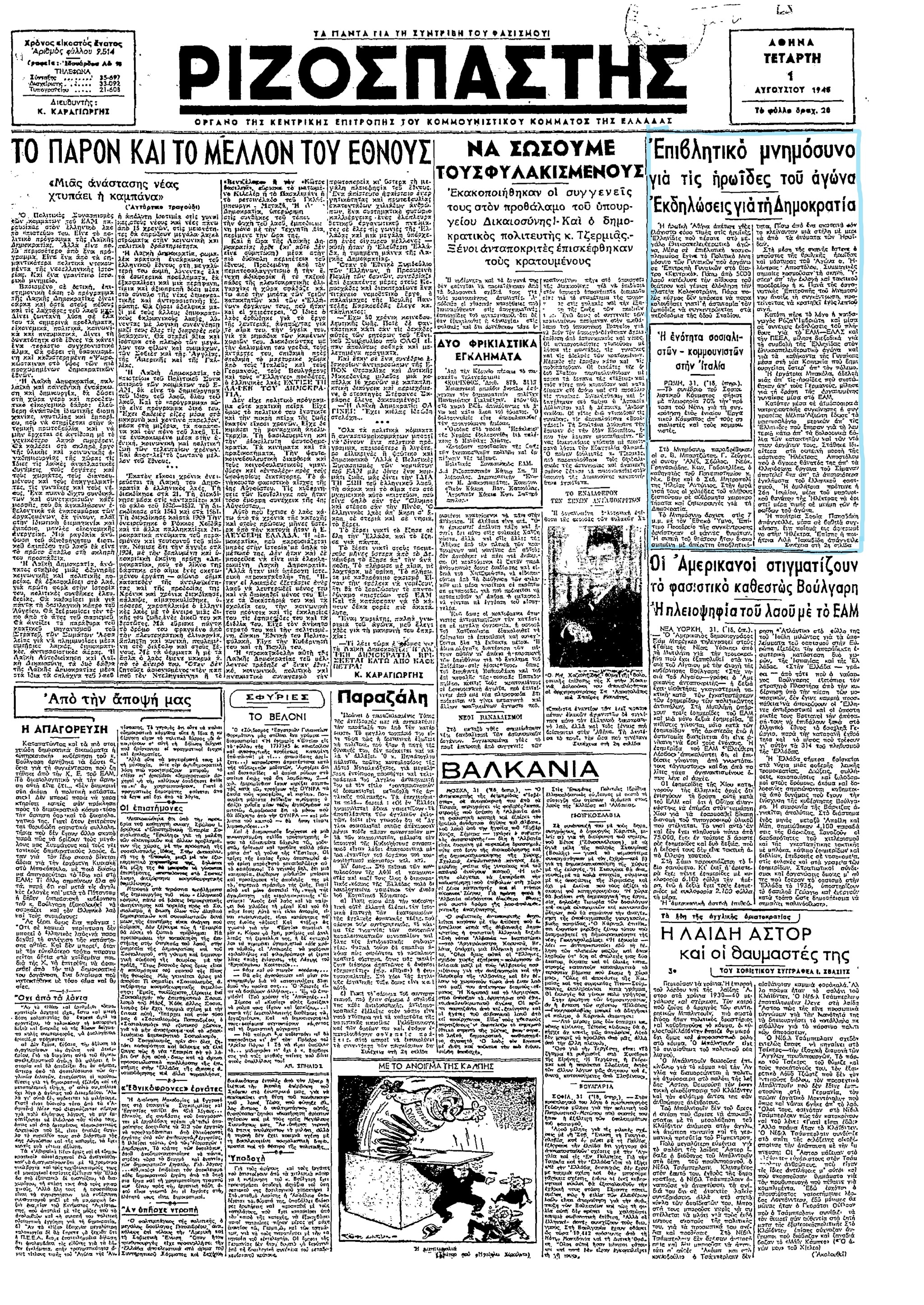

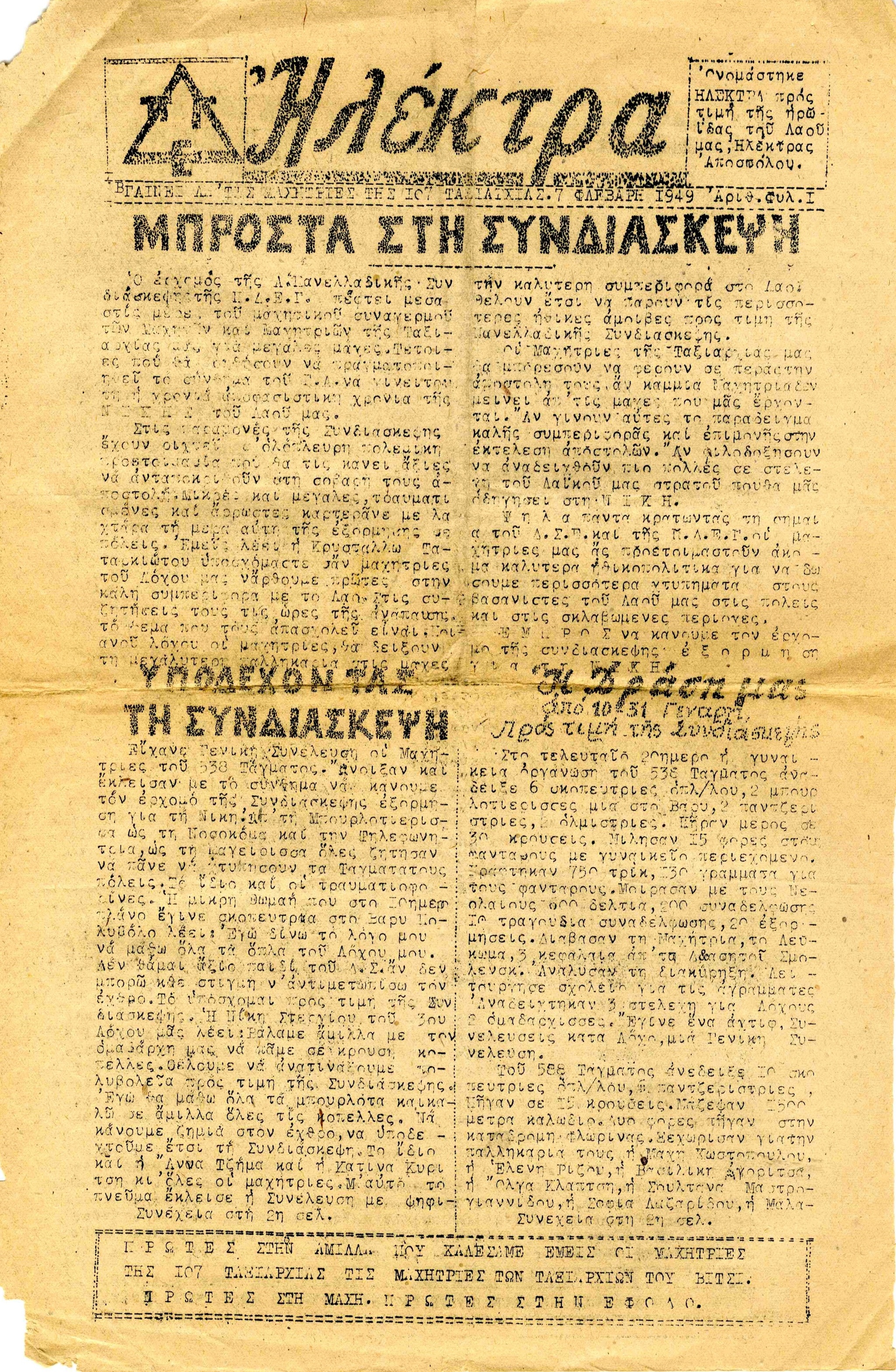
![Newspaper Machitria [Female fighter] with a front page dedicated to Elektra Apostolou, 1949. The newspaper was published during the Greek Civil War (1946-1949) by the women fighters of the Democratic Army of Greece (DSE).](https://aski.gr/wire/wp-content/uploads/2024/03/ASKI_Apostolou_014.jpg)
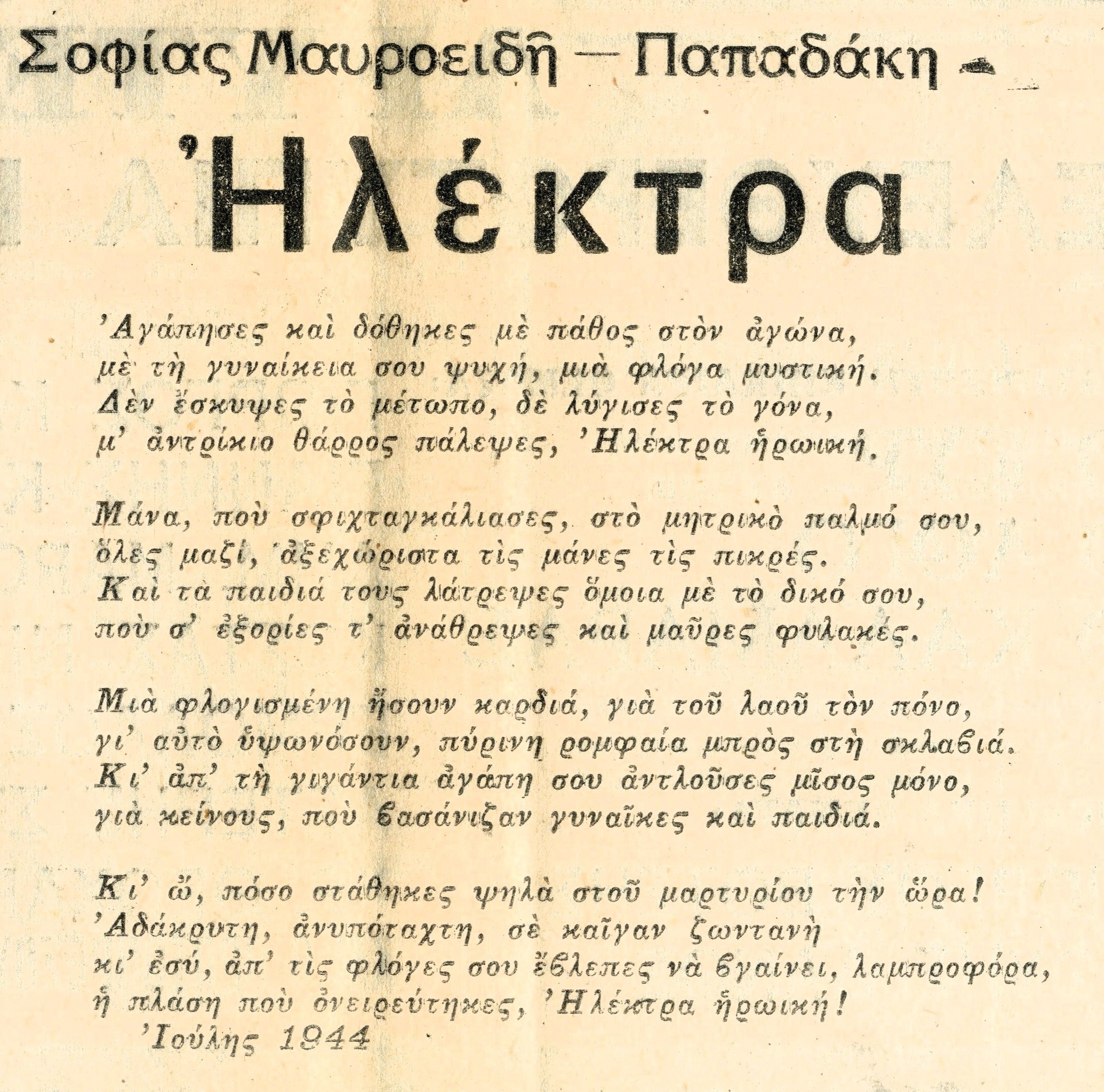

![Anniversary tribute of the newspaper Avgi [Dawn] on the death of Elektra Apostolou, a symbol of the Greek National Resistance, 27/7/1976 (ASKI Library)](https://aski.gr/wire/wp-content/uploads/2024/03/ASKI_Apostolou_017.jpg)